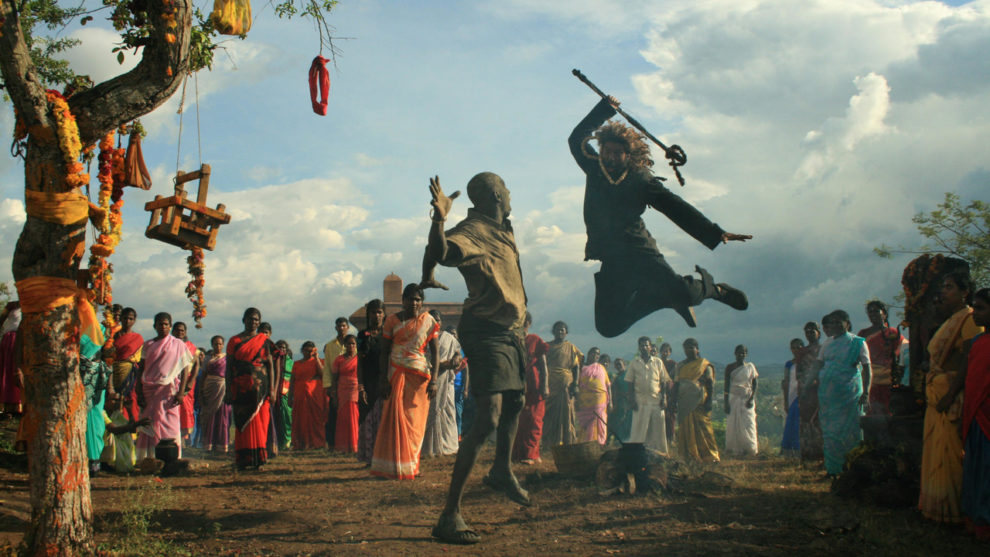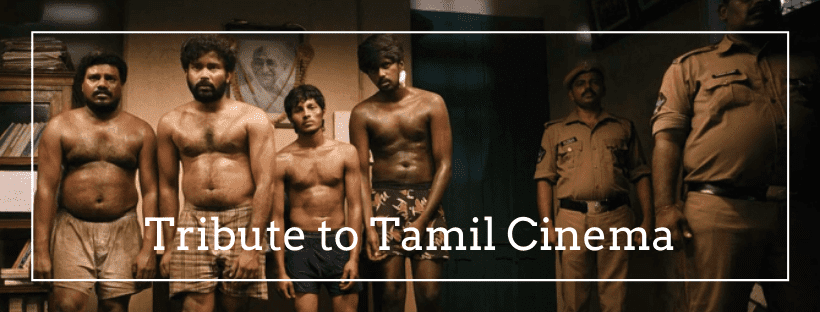My trip into Tamil Nadu and Bala' cinema continues, after “Vagabond” with “I Am God”, one of his previous films and a much more raw and disturbing effort. The script is based on the Tamil novel Yezhaam Ulagam by Jeyamohan, who also penned the dialogues for the film.
Rudran's father made a terrible mistake 14 years ago, when, after listening to an astrologer saying his son was born under an evil star and would bring disaster to his family, abandoned him in Kashi (Varanashi). Now, the father has returned to the city with deep regret in order to find his son and bring him back to Tamil Nadu, as per his wife's wishes. However, he discovers that his son has become an Aghori: an ascetic who spends his life close to death, praying to Shiva and considering himself to be a God. Eventually, Rudran decides to follow his father, but his family soon realizes that they have got much more than they bargained for, since Rudran proves to be a true mad dog.
I Am God screened at International Film Festival Rotterdam

At that point, the focus of the film shifts to a band of disfigured and handicapped beggars, who are exploited by Thandavan, a ruthless ruler who treats them as commercial items. Soon, Hamsasavalli, a blind girl with a great voice that is part of a group of street performers is abducted and ends up in Thandavan's group. With the corruption of the area extending to the police and a number of peripheral characters, Rudran seems like the only one who can put an end to their practices.
Bala directs a film that uses Rudran's story as a base in order to present the shocking truths about the beggars in the area, who are exploited to the highest degree, even having to be tortured in order to appear more grotesque and thus earn more money by begging. Bala creates a truly onerous setting in this environment, with the movie occasionally functioning as a freak show, in a much more grotesque fashion than the concept has been presented in international cinema. The director also makes a point of highlighting that these people are loyal to each other and are able, occasionally, to laugh and have a good time, although the fact that they are being exploited and even sold as commodities eventually takes over.
Another point the movie makes is that in India, there are many gods, with a number of people assuming the title by themselves or just accept the fact that others believe them to be so. Rudran however, exhibiting a “holy madness”, seems to truly believe he is one, with his purpose being to erase any kind of evil from the face of the Earth, and that he is above the law and any human bond, including his family. Arya gives a great performance in the role, highlighting the aforementioned characteristics in the best fashion. He does not appear in the film as much as one would think after watching the introduction scenes, but every time he is on, he steals the show with his talking, movement and above all, his extremely intense look. Bala draws the best out of him, having the camera focusing on his tremendous green eyes and “coating” his fast and constantly “attacking” movements with music that intensifies the effect, while Arya tries his best to appear as intimidating as possible and succeeds to the fullest.
Arthur A. Wilson, the cinematographer, has done a tremendous job on this aspect, while his shooting of Kasi, the temples, the caves, the dark dungeons, the various rituals and the “freaks” is outstanding, heightening the mood Bala wanted to give to each scene to the highest degree. Suresh Urs's editing gives a relatively fast pace to the movie, while it finds its apogee in the various action scenes, who move much faster than the rest of the film. The combination with Ilaiyarajaa's tracks is impressive in these sequences, while in a number of occasions, the film functions as a music video. This, however, is where the production's biggest fault lies since these sequences are occasionally too long and do not seem to assist in the story in any way possible. Furthermore, they extend the duration of the movie to more than two hours, a case that, considering the film's extreme nature, does not help its entertainments aspect, although not to a point that ruins the general, quite good aesthetics.
Pooja as Hamsavalli plays the archetypical role of the damsel-in-distress quite convincingly, while Rajendara as Thandavan makes for a great villain, a truly despicable and ruthless man. The ones who steal the show though, are definitely the plethora of handicapped and disfigured individuals that appear throughout the movie, with their presentation highlighting both their effort and Bala's ability in directing them.
“I Am God” is a less refined effort than “Vagabond” but the film oozes with raw power and that is where its value lies, along with the disturbing, but highly realistic depiction of the lives of the individuals that reside in the borders of society.
















